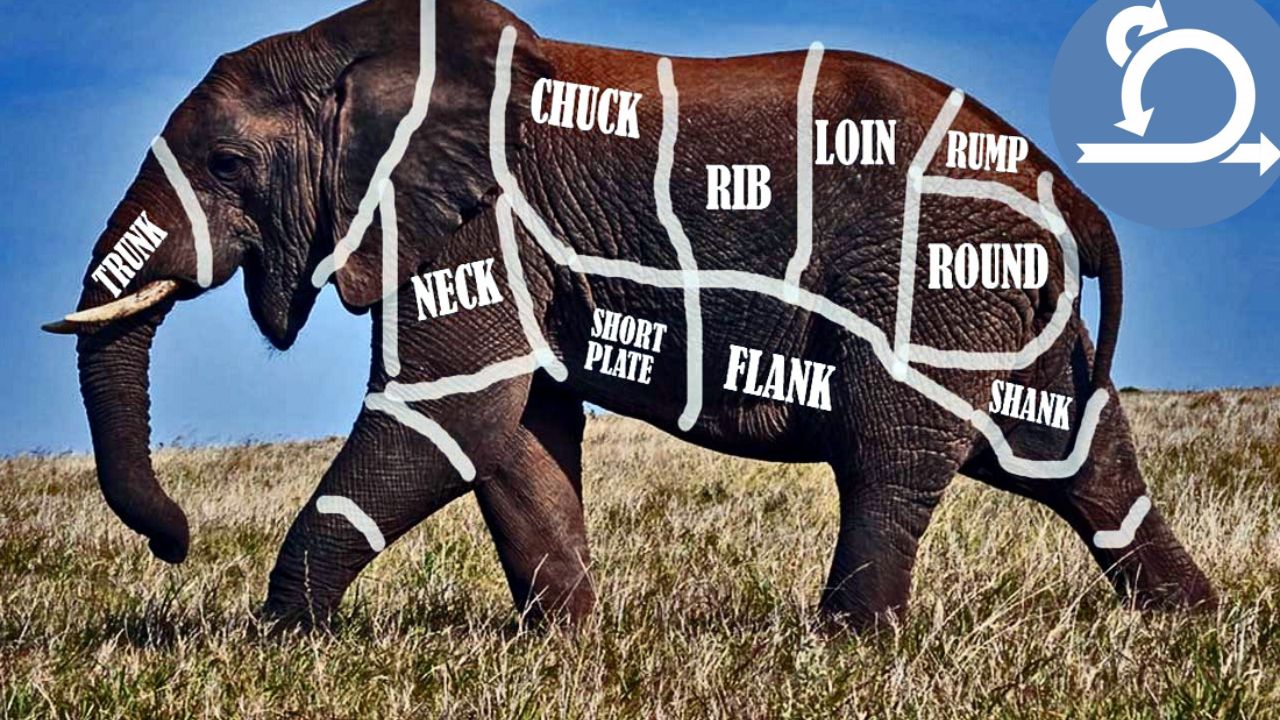How to Eat the Elephant Using Scrum
Introduction
Are you faced with an enormous, complex problem that seems impossible to conquer? Imagine if someone asked you to eat an elephant! 🤔 But what if there was a way to approach it one bite at a time? 🍽️
Discover how Scrum, a powerful framework, can help you break down and devour even the biggest challenges. 🌟 Join our Agile and Scrum Masterclass to gain practical skills and embark on a journey of success. 🎯 Embrace Scrum and start conquering your own elephants today! 🐘💪
Approaching the Elephant
As an experienced Scrum professional, I often find myself faced with complex problems that seem insurmountable. To help others understand the power of the Scrum framework, I often start with a simple analogy: eating an elephant. Just like a big problem, an elephant can be overwhelming if approached as a whole. However, by breaking it down into smaller, manageable pieces, we can achieve remarkable results.
Can You Help Me Eat the Elephant?
One day, a partner approached me with a problem they couldn’t fully comprehend. They were aware of its enormity and complexity but didn’t know where to begin. They asked me if I could help them “eat the elephant.” Intrigued, I explained that while it’s impossible to consume an entire elephant in one go, we can tackle it piece by piece.
One Bite at a Time
I shared a story with my partner to illustrate the approach we would take. Imagine standing before a massive elephant. At first glance, it may seem impossible to consume it entirely. However, if we adopt a systematic approach, we can break it down into manageable bites and conquer the task.
Applying Scrum to Eating the Elephant
To tackle the elephant-sized problem, we will apply the principles of the Scrum framework. Here’s how we can adapt the process to “eating the elephant”:
- Choose the Right Bite: We must carefully select which part of the elephant to start with. This decision is based on the highest value and urgency for our customers. By prioritizing their needs, we ensure that our efforts are focused on delivering the most valuable outcomes.
- Explain the Value: With each bite we take, it’s important to communicate the value it brings to our customers. Whether it’s improving efficiency, enhancing user experience, or increasing revenue, we must align our efforts with the needs and expectations of those we serve.
- Create an Eating Agenda: Just like a Scrum backlog, we need an eating agenda. This roadmap outlines the order in which we will consume each bite, based on the priority and dependencies. It provides a clear plan that guides our progress and keeps us aligned with the desired outcomes.
- Low-Quality Meat: Occasionally, we may encounter low-quality meat during our elephant feast. In Scrum, we prioritize delivering high-quality work, and low-quality meat represents potential risks or ineffective solutions. By placing it at the end of our agenda, we allow our customers to make informed decisions about whether to consume it or discard it.
Embrace Scrum and Tackle Your Own Elephants
In conclusion, when faced with complex problems, remember the elephant analogy. Just as eating an elephant is possible one bite at a time, tackling big challenges is feasible with the Scrum framework.
By prioritizing customer value, creating a clear roadmap, and delivering high-quality work, we can conquer even the most daunting tasks.
If you’re intrigued by the power of Scrum and want to dive deeper into this transformative framework, I invite you to join our Agile and Scrum Masterclass.
In just 10 days, you’ll gain comprehensive knowledge and practical skills to master the Scrum framework. This intensive program is designed to equip you with the tools and techniques needed to excel in Scrum.
What to Expect from Our Agile and Scrum Masterclass
- In-depth understanding: Learn the core principles, values, and practices that underpin Scrum. Gain a deep understanding of the roles, artifacts, and ceremonies involved in the framework.
- Practical application: Explore real-world case studies and engage in hands-on exercises to apply Scrum concepts in a simulated project environment. Build the confidence to implement Scrum effectively in your own projects.
- Tools and techniques: Discover a wide range of tools and techniques used in Scrum, including user stories, backlog management, sprint planning, daily stand-ups, sprint reviews, and retrospectives. Develop a toolkit to enhance collaboration, transparency, and productivity within your teams.
- Expert guidance: Learn from experienced Scrum practitioners who have worked on multiple complex projects for top tech companies. Benefit from their insights, best practices, and lessons learned from the field.
- Networking opportunities: Connect with like-minded professionals, share experiences, and expand your professional network. Collaborate with peers and gain valuable insights from their Scrum journeys.
Don’t miss this opportunity to accelerate your Scrum journey and take your Agile skills to the next level.
Join our Agile and Scrum Masterclass and become a proficient Scrum practitioner.
To enroll or learn more about the program, visit our website at www.whatisscrum.org or contact our team at dejan (at) whatisscrum.org.
Spaces are limited, so secure your spot today.
Remember, success lies in your ability to break down the biggest challenges into manageable tasks and continuously adapt and improve.
Embrace Scrum, and together, we can conquer any elephant-sized problem that comes our way.
